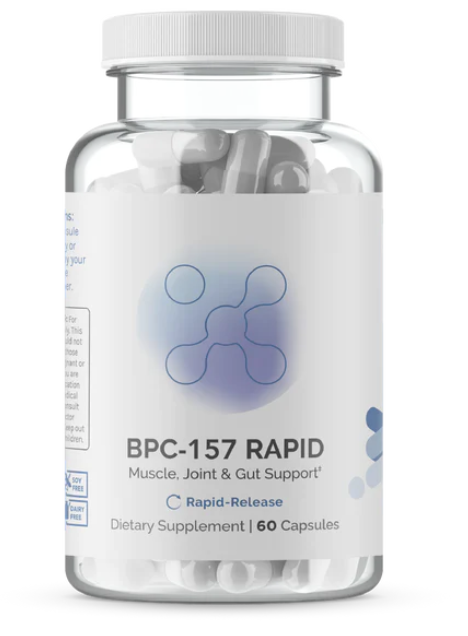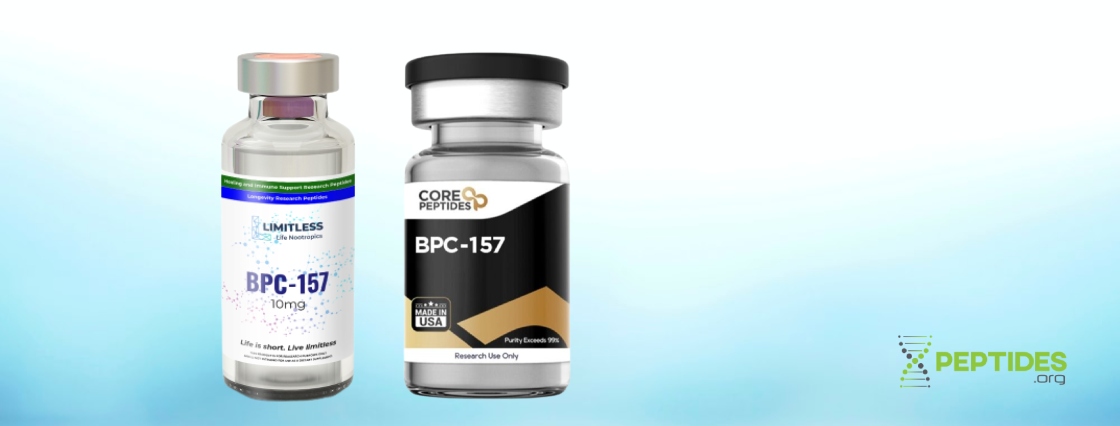
August 27, 2024
Bpc 157 And Blood Vessels Bentham Science
How Bpc-157 Operate In The Body Therefore, the confirmed serious exceptional sagittal sinus, site, and caval hypertension and aortal hypotension took place along with the quick worsening that would certainly appear along with decompression (Hsu et al., 2004). The decrease with BPC 157 is along with its previous lowering possibility on severe remarkable sagittal sinus, portal, and caval hypertension and aortal Learn here hypotension (Vukojevic et al., 2018; Gojkovic et al., 2020; Kolovrat et al., 2020; Gojkovic et al., 2021a; Knezevic et al., 2021a; Knezevic et al., 2021a; Gojkovic et al., 2021b; Knezevic et al., 2021b; Strbe et al., 2021). We examined the pharmacokinetics of BPC157 after its IV and IM administration in rats and beagle dogs. According to the outcomes, the removal half-life (t1/2) of the model BPC157 was less than 30 minutes, and BPC157 revealed straight pharmacokinetic qualities in rats and beagles whatsoever speculative dosages. After IM shots of 20, 100, and 500 μg/ kg of BPC157 in rats and 6, 30, and 150 μg/ kg of BPC157 in beagles, plasma BPC157 reached its optimal swiftly (within 9 minutes). The pharmacokinetic criteria of BPC157 did not significantly transform after repeated management of BPC157 contrasted to those observed after a solitary IM shot of the exact same dose provided daily for 7 days.What Are The Advised Does For Bpc-157?
Stable Gastric Pentadecapeptide BPC 157 Therapy for Primary Abdominal Compartment Syndrome in Rats - Frontiers
Stable Gastric Pentadecapeptide BPC 157 Therapy for Primary Abdominal Compartment Syndrome in Rats.
Posted: Sun, 12 Dec 2021 08:00:00 GMT [source]

- This outcome recommends that BPC 157-treated rats exhibit regular enhancement in motor function also before tissue recovery, as observed by microscopy analysis.
- All pets were dealt with humanely, and all research studies were executed according to great research laboratory technique (GLP) (China Fda, CFDA) standards for nonclinical research laboratory researches of medications issued by the National Scientific and Technological Committee of individuals's Republic of China.
- Consequently, in regards to the removal half-life, BPC157 adapted the features of basic peptide drugs.
- The reliable dose of BPC157 for the treatment of various injuries in computer mice, rats, and rabbits ranges from 6 to 50 μg/ kg (Huang et al., 2015; Mota et al., 2018; Sikiric et al., 2018).
Reported Benefits Of Bpc 157:
To speed up anastomosis healing, several research studies link the positive result of the generated angiogenesis that follows partial devascularization of the stomach after a particular duration (i.e., two-week period) [34-37] As a really energetic cytoprotective representative, BPC 157 [6], faced with an adverse training course, quickly causes strong endothelium defense [38] just like typical cytoprotective agents [39], yet it has an extra noticeable angiogenic result [40] that might substantially add to healing in esophagogastric anastomosis. Lastly, with BPC 157 assigned as a "injury healing treatment" [1-7], these were credited to the stimulation of the early development response-1 (EGR1) gene and its co-repressor nerve development aspect 1-A binding protein-2 (NAB2), which influenced cytokine and growth aspect generation and, thereby, very early extracellular matrix (collagen) and blood vessel formation [41] Therefore, a certain feedback-process for the synchronised healing of different tissues was recommended, leading to both inner and exterior injury healing, anastomosis and fistulas [1-7] Others associated the BPC 157 valuable results with the activation of a mobile FAK-paxillin signaling path and, subsequently, showed that BPC 157 dosage- and time-dependently increased the expression of development hormone receptor, Janus kinase 2, which belongs to the downstream signal pathway of development hormonal agent receptor and might communicate with various other molecular paths [42-44] In addition, the appropriate activation of alternate pathways ought to happen along with the added (direct) useful results on impacted targets.Bpc 157 Banned: What You Require To Know About The Most Up To Date Fda Choice
Together with the "bypassing vital" and rapidly triggered securities, Virchow's triad was consistently minimized, both peripherally and centrally (Vukojevic et al., 2018; Gojkovic et al., 2020; Kolovrat et al., 2020; Gojkovic et al., 2021a; Knezevic et al., 2021a; Knezevic et al., 2021a; Gojkovic et al., 2021b; Knezevic et al., 2021b; Strbe et al., 2021). In particular, BPC 157-induced endothelial maintenance (Sikiric et al., 1994) and the "bypassing crucial" (Vukojevic et al., 2018; Gojkovic et al., 2020; Kolovrat et al., 2020; Gojkovic et al., 2021a; Knezevic et al., 2021a; Knezevic et al., 2021a; Gojkovic et al., 2021b; Knezevic et al., 2021b; Strbe et al., 2021) occur together with the formerly noted BPC 157-NO system communications. This can involve the launch of NO by itself (Sikiric et al., 1997; Turkovic et al., 2004), in addition to maintained NO system feature against NOS clog (L-NAME) or overfunction (L-arginine) (for testimonial, see Sikiric et al., 2014). In addition, blood pressure upkeep (Sikiric et al., 1997), maintained thrombocyte feature (Stupnisek et al., 2015; Konosic et al., 2019), and vasomotor tone took place with BPC 157-specific activation of the Src-caveolin-1-eNOS pathway (Hsieh et al., 2020). Besides, the "bypassing crucial" likewise occurred with minor vessel occlusion, showing a therapeutic result. I likewise go over peptide sourcing, dosages, biking, routes of administration, and exactly how peptides operate in combination. Notably, regular rats showed a remarkable sagittal sinus pressure of − 24 to − 27 mmHg and remarkable mesenteric stress and portal stress of 3-- 5 mmHg similar to that of the substandard vena cava, though with values a minimum of 1 mmHg greater in the portal blood vessel. By comparison, abdominal aorta blood pressure worths were 100-- 120 mm Hg at the level of the bifurcation (Vukojevic et al., 2018; Gojkovic et al., 2020; Kolovrat et al., 2020; Gojkovic et al., 2021a; Knezevic et al., 2021a; Knezevic et al., 2021a; Gojkovic et al., 2021b; Knezevic et al., 2021b; Strbe et al., 2021). Both BPC 157 regimens ( µg and ng) supplied a comparable healing effect in all of the checked out methods of abdominal area syndrome. In summary, after BPC 157 treatment, rats with high intra-abdominal stress (quality III and grade IV) displayed considerably attenuated site and caval hypertension, alleviated aortal hypotension, and considerably attenuated exceptional sagittal sinus hypertension. Furthermore, venous and arterial thrombosis was undermined, both peripherally and centrally, which markedly mitigated tension and in addition lowered mind, heart, lung, liver, kidney, and stomach lesions as the unattended outcome. In calvarial home window (top), at 15 min enhanced stress time and medicine saline (5 ml/kg ip) (upper, left, control, a) or BPC 157 (10 ng/kg sc) (upper, appropriate, A), at 10 minutes enhanced intra-abdominal stress time. After sacrifice (reduced), at the 25 min increased intra-abdominal stress time (saline (5 ml/kg ip) (reduced, left, control, b) or BPC 157 (10 ng/kg sc) (low, ideal, B) at 10 minutes boosted intra-abdominal stress time. Prominent brain swelling in control rats (left), totally turned around in BPC 157 rats (right). A camera connected to a VMS-004 Exploration Deluxe USB microscopic lense (Veho, United States). Rats were laparatomized before sacrifice for the corresponding presentation of the outer vessels (azygos blood vessel, premium mesenteric blood vessel, portal blood vessel, substandard caval capillary, and stomach aorta). The recording was executed with an electronic camera affixed to a VMS-004 Exploration Deluxe USB microscopic lense (Veho, USA) at the end of the experiment and examined as before (Gojkovic et al., 2021a; Knezevic et al., 2021a; Knezevic et al., 2021a; Knezevic et al., 2021b; Strbe et al., 2021).What body organs does BPC 157 heal?
Studies conducted in rodents and cultured cells have actually suggested that BPC-157 might support the recovery of different cells, consisting of ligaments, joints, nerves, the digestive tract, the stomach, and skin. What are BPC-157''s primary drawbacks? BPC-157''s prospective disadvantages doubt, given the absence of human proof.

Social Links